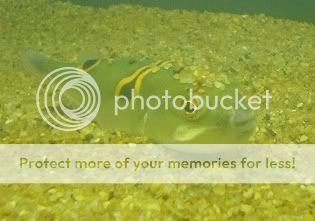Yes SamUK, you are the only person who thinks that research should be done before a fish is bought
Just kidding...I was at a very impressive specialty fish store, recommended by some friends with a couple of reef tanks, I thought I could trust the advise by the guy there. But, now I know better thanks to all of you.I am going to try to keep this guy happy and alive the best that I can with the resources at my disposal.
I now have marine salt instead of tonic salt.
A hydrometer to test it.
I am told that I can get some brine shrimp? here locally, would that suffice for this guy?
PS having trouble keeping the water at 16-18 C. Even though our house is usually aired down pretty low...how big of an expence is a chiller and how important would you rate it on a scale of 1 - 10?
would adding an air pump help keep the oxygen up in lieu of a colder temp?
Brand
Not many of my puffers take brine shrimp, you may well be better off trying foods like mussels, cockles (in shells preferably for those 2 foods), bloodworm etc.
A chiller may be necessary for the long term care of the fish if it is to be believed that they need lower temperatures (which I think they do). Might be worth investing in one if you can.


 )
)